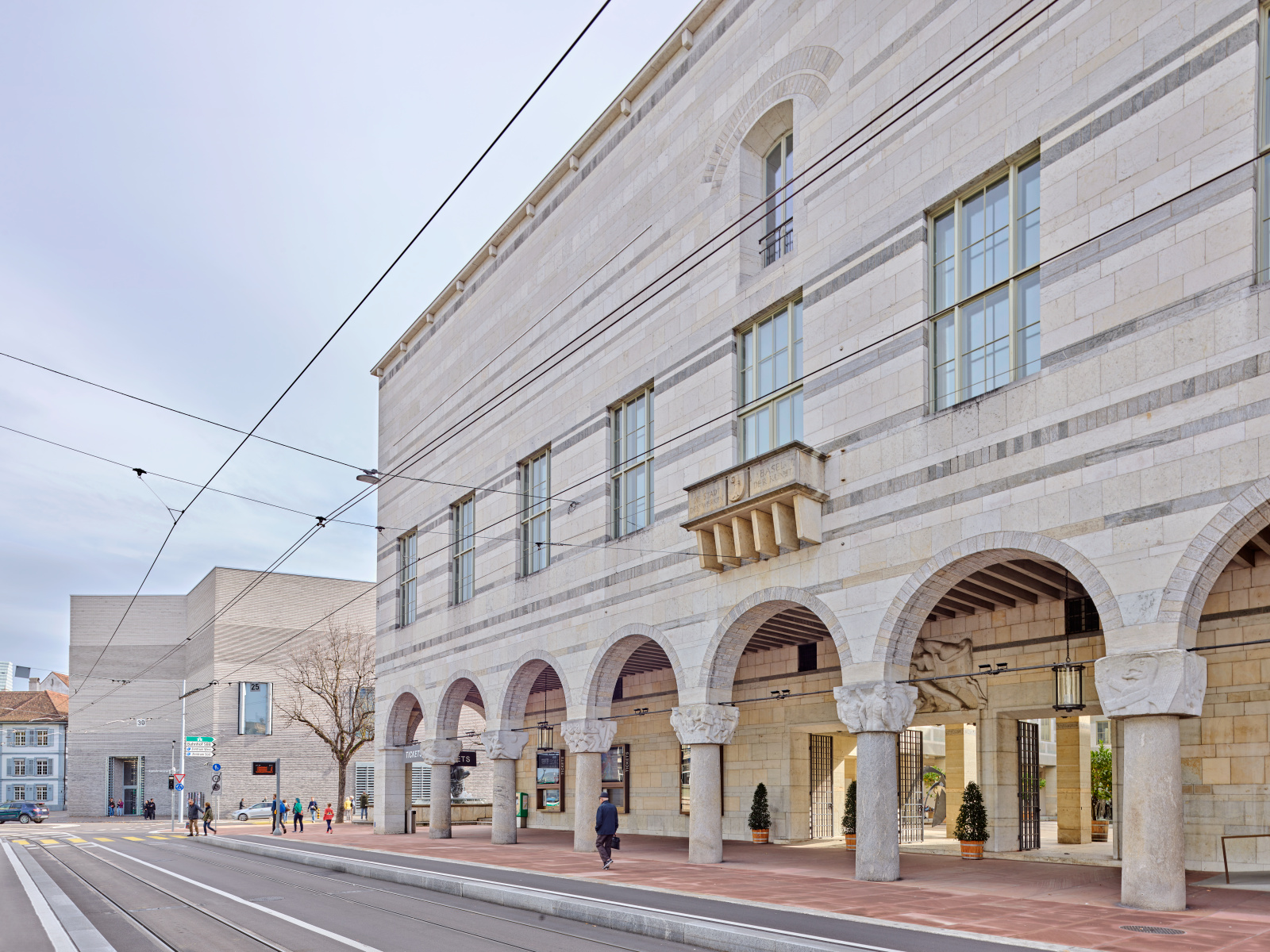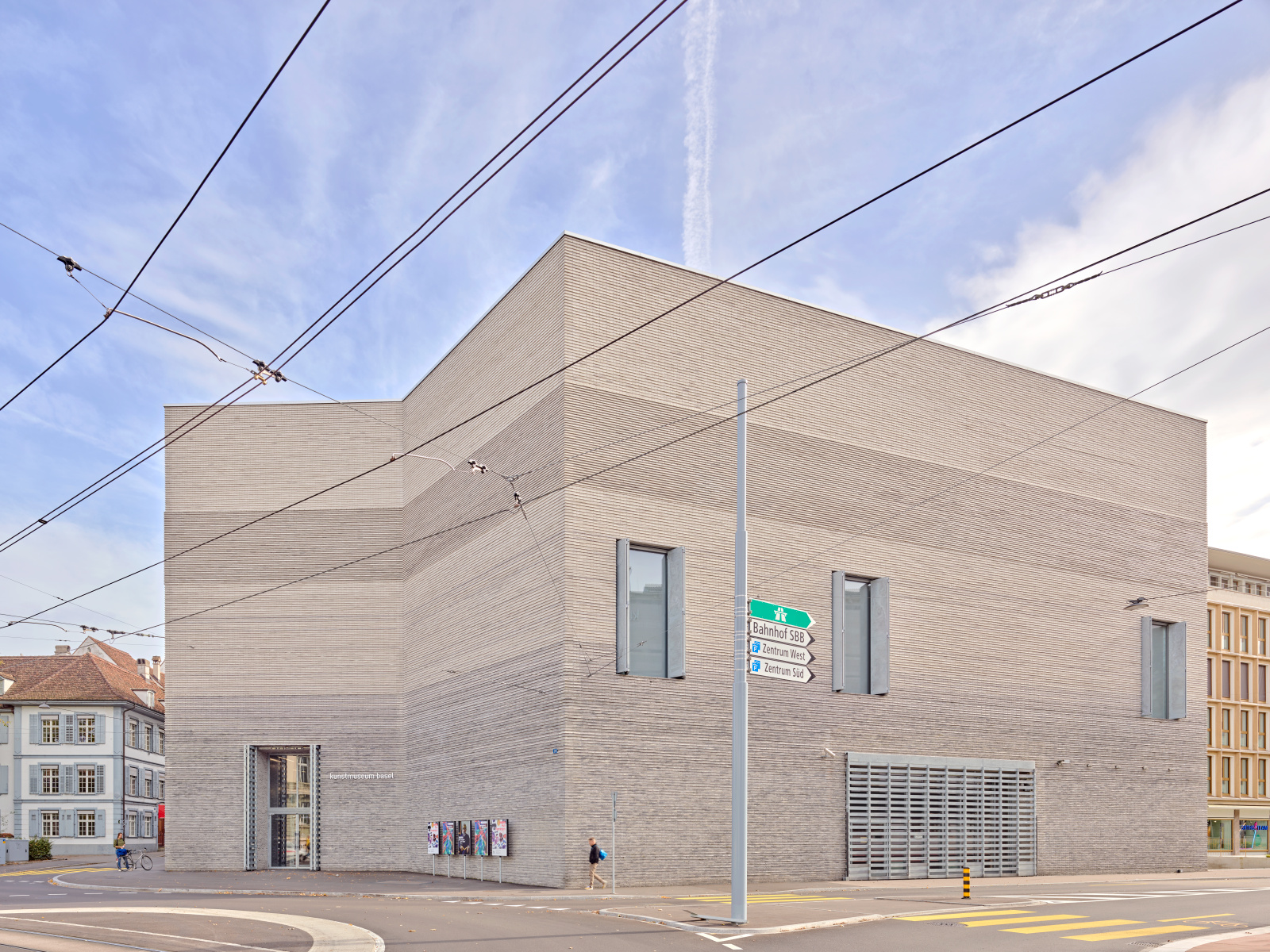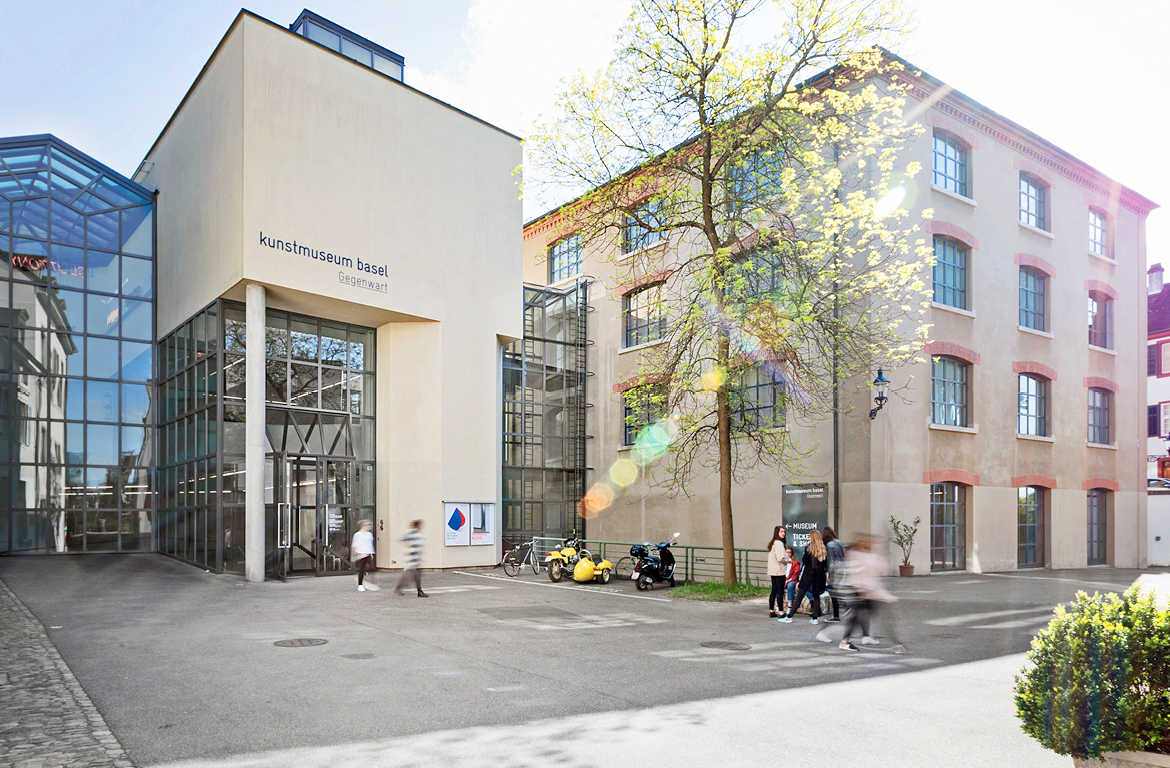Our three venues
The Öffentliche Kunstsammlung Basel, the municipal art collection of Basel, dates back to 1661, when the city acquired the Amerbach Cabinet. It grew steadily over the centuries, necessitating several relocations within Basel. The Hauptbau on St. Alban-Graben was inaugurated in 1936. A first enlargement came in 1980, when the Kunstmuseum Basel | Gegenwart opened its doors; a third venue, known as the Neubau, was added in 2016.

Kunstmuseum Basel | Hauptbau
St. Alban-Graben 16, 4051 Basel
Hauptbau
The Kunstmuseum Basel’s Hauptbau was completed in 1936 based on plans by the architect Rudolf Christ (Basel) and his colleague Paul Bonatz (Stuttgart), two representatives of a conservative modernism. It was originally conceived solely for the presentation of the museum’s collections, and since the spring of 2016, when the new building with its skylighted galleries specifically designed for special exhibitions opened, the main building is once again entirely dedicated to its original purpose.
The ground floor now showcases the collection of art from Basel; the mezzanine is reserved for the treasures of the Im Obersteg Collection. The collections of medieval and Renaissance art as well as works from the seventeenth, eighteenth, and nineteenth centuries can be found on the second floor. The art of classic modernism and European postwar modernism is presented on the third floor. Finally, the Hauptbau also houses the museum’s department of prints and drawings (on the mezzanine) and the shop and museum bistro (on the ground floor).

Kunstmuseum Basel | Neubau
St. Alban-Graben 20, 4052 Basel
Neubau
In April 2016, the museum inaugurated a third venue across the street from the Hauptbau, to which it is connected by an underground passage: the Neubau by the local architects Christ & Gantenbein. It is designed to accommodate both special exhibitions and presentations of art from the collections. Construction of the new building was made possible by a public-private partnership: Dr. h. c. Maja Oeri donated the funds that enabled the Canton of Basel-Stadt to purchase the building plot, and the Laurenz Foundation contributed CHF 50 million toward the building costs of altogether ca. CHF 100 million.
Many elements of the Neubau quote the architectonic idiom of its older sibling across the street. The dialogue between the structures is most readily apparent in the new building’s monumental staircase beneath a central circular skylight, the rough scraped plaster in the foyer and stairwell, and the subtle colors of the brick façade.
The great special exhibitions are held in the skylighted galleries on the third floor. Treasures from the collection of art after 1950 are presented on the other gallery levels and in the passageway connecting the Neubau to the Hauptbau – with the exception of contemporary art, which is on view at the Kunstmuseum Basel | Gegenwart. A branch of the shop in the Hauptbau is located on the Neubau’s ground floor.

Kunstmuseum Basel | Gegenwart
St. Alban-Rheinweg 60, 4052 Basel
Gegenwart
The first enlargement came in 1980 with the inauguration of the “Museum für Gegenwartskunst” on St. Alban-Rheinweg. Now known as Kunstmuseum Basel | Gegenwart, it was one of the first museums dedicated to contemporary art in the world. It was created in a joint effort by the Emanuel Hoffmann Foundation, the Christoph Merian Foundation, and the Canton of Basel-Stadt. Construction was made possible by a generous donation from Maja Sacher-Stehlin, who established the Emanuel Hoffmann Foundation, as well as her family and the Emanuel Hoffmann Foundation. The Christoph Merian Foundation provided the building, erected on land owned by the Canton of Basel-Stadt.
The Kunstmuseum Basel | Gegenwart presents works of contemporary art from the holdings of the Kunstmuseum Basel and the Emanuel Hoffmann Foundation as well as special exhibitions. Since 2003, the works of the Emanuel Hoffmann Foundation not currently on display are held at the Schaulager. In addition to changing presentations of treasures from the collections, which are designed to enter into a dialogue with the temporary shows, the museum regularly hosts lectures and panel discussions on issues in contemporary art as well as discussions of selected works and guided tours. Tickets are available in the entrance hall.
